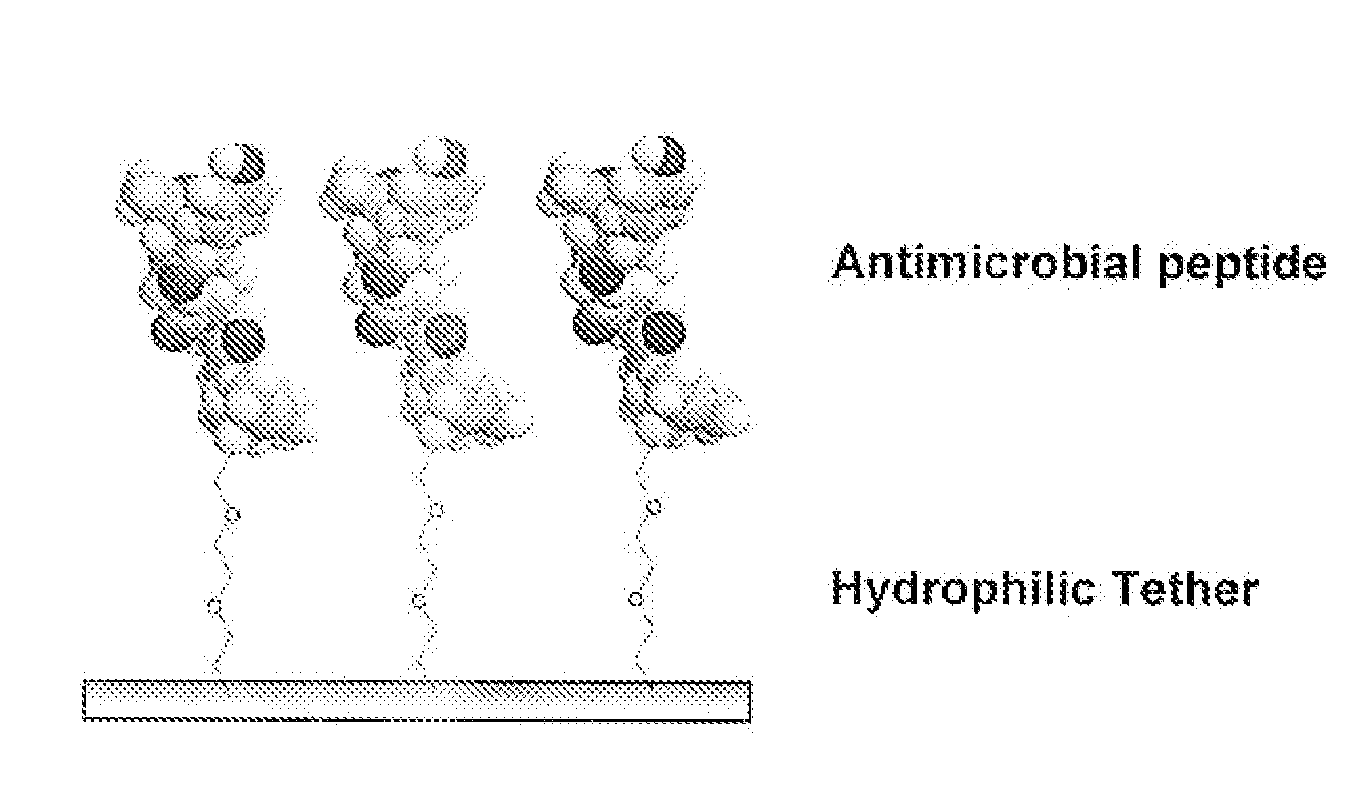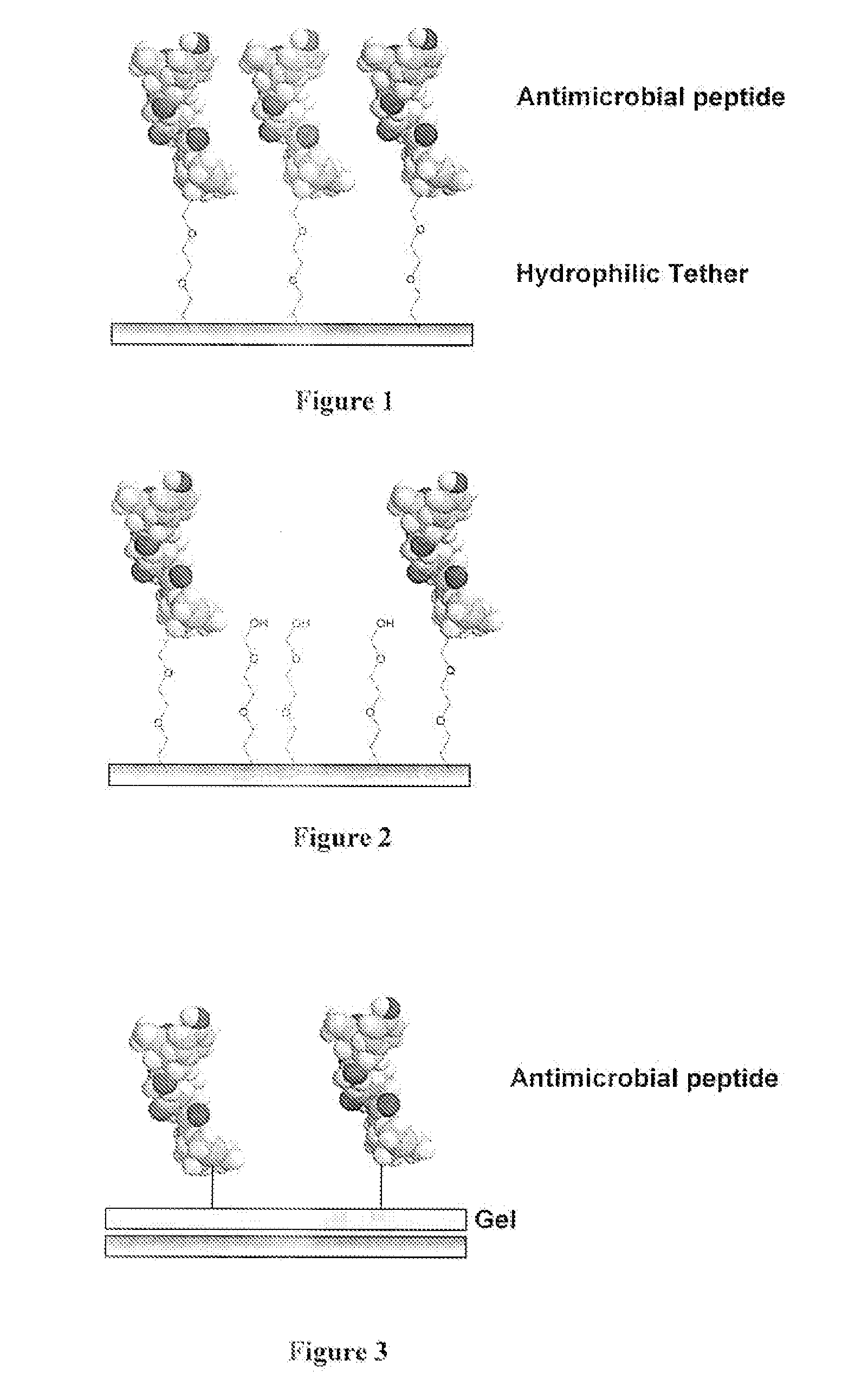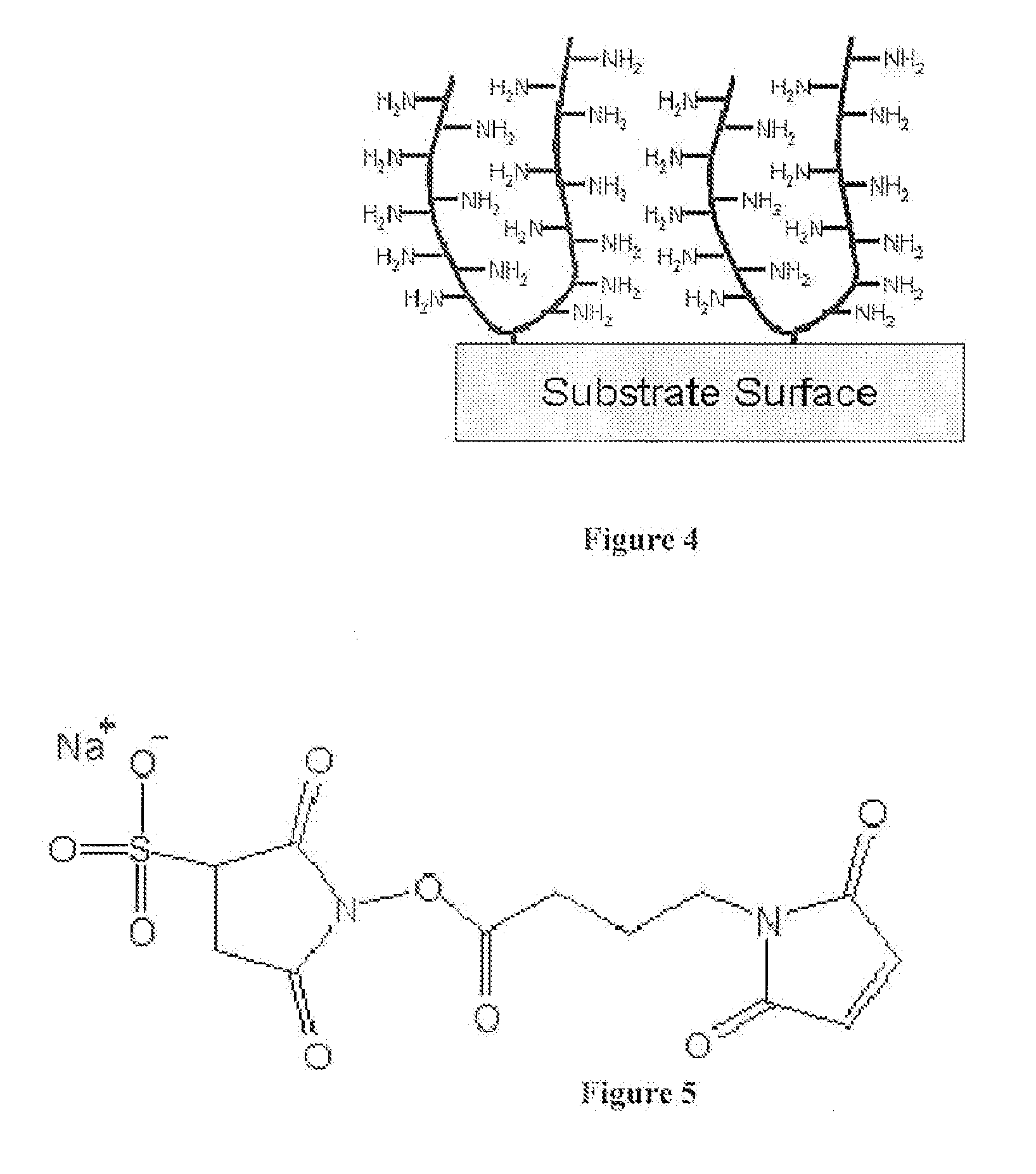Medical Devices and Coatings with Non-Leaching Antimicrobial Peptides
a technology of antimicrobial peptides and medical devices, applied in the direction of peptide/protein ingredients, prosthesis, drug compositions, etc., can solve the problems of ineffective systemic antibiotics in treating such infections, increased hospital infections, and increased cost and difficulty in treatment, so as to reduce the concern of peptide toxicity and the development, the effect of sufficient flexibility and mobility
- Summary
- Abstract
- Description
- Claims
- Application Information
AI Technical Summary
Benefits of technology
Problems solved by technology
Method used
Image
Examples
example 1
Antimicrobial Activity of an Immobilized Antimicrobial Peptide
Materials and Methods
[0155] Synthesis of Antimicrobial Peptide
[0156] The antimicrobial peptide, cystein-incorporating Cecropin-Melittin hybride peptide (KWKLFKKIGAVLKVLC-NH2) (SEQ ID NO:5), was synthesize using fluorenylmethoxycarbonyl (Fmoc) chemistry using an Intavis Multipep Synthesizer (available from Intavis LLC).
[0157] NH2-microparticles (TentaGel S-NH2 resin, Anaspec. Cat. #22795) were used as the substrate to immobilize a cysteine-incorporating Cecropin-Melittin hybride peptide (KWKLFKKIGAVLKVLC-NH2) (SEQ ID NO:5) via the tether N-[γ-maleimidobutyryl-oxy]succinimide ester. The number of free amino groups was quantified using the ninhydrin assay. Approximately 6.7 mg of microparticles were suspended in 1 mL of 1 M acetate buffer pH 5.0 containing 12.5 mg of ninhydrin (Sigma). The suspension was kept in boiling water for 15 min. After 15 min the sample was removed and 15 mL of an ethanol / water mixture (1 / 1, v / v...
example 2
Antimicrobial Peptides Immobilized on a Planar Surface Exhibit Antimicrobial Properties
[0162] A cysteine-incorporating Cecropin-Melittin hybrid peptide (KWKLFKKIGAVLKVLC-NH2) (SEQ ID NO: 5) was immobilized on a commercial membrane with terminal amine groups (0.340 μmoles of NH2 per cm2, as determined by the picric acid assay) (Intavis product number 30.100), that is used for the solid state synthesis of peptides. The terminal amine groups of the membrane was reacted with the succinimide groups of sulfo-GMBS and in a subsequent step the maleimide groups of sulfo-GMBS was reacted with the thiol groups of the cysteine-incorporating peptide. The amount of peptide bound to the membrane was determined indirectly from the difference between the initial total peptide exposed to the beads and the amount of peptide recovered in the several washes. The quantity of immobilized peptide was approximately 2.0 mg per cm2 of membrane. This peptide-conjugated membrane was tested for immobilized bact...
example 3
Antimicrobial Peptides Immobilized on a Planar Surface Exhibit Antimicrobial Properties after more than 3 Weeks Storage in PBS through Repeated Challenges of Bacteria
[0164] Samples identical to those generated in Example 2 and stored at 4° C. in pH 7.4 PBS for more than three weeks. When this peptide-conjugated membrane was tested against for immobilized bactericidal activity against Escherichia coli, an average of a 1.8-log reduction of bacteria in solution occurred over 1 h. The samples were then removed from the testing solution, and placed in fresh PBS. Samples then underwent 10 minutes of ultrasonication, switched to fresh PBS, and underwent an additional 30 minutes of sonication. They were then rinsed and retested. The immobilized antibacterial activity, using the assay described in Example 2, of the washed samples was measured against Escherichia coli ATCC 25922, and an average of a 3.3-log reduction in bacteria occurred in 1 hour.
PUM
| Property | Measurement | Unit |
|---|---|---|
| Time | aaaaa | aaaaa |
| Composition | aaaaa | aaaaa |
| Length | aaaaa | aaaaa |
Abstract
Description
Claims
Application Information
 Login to View More
Login to View More - R&D
- Intellectual Property
- Life Sciences
- Materials
- Tech Scout
- Unparalleled Data Quality
- Higher Quality Content
- 60% Fewer Hallucinations
Browse by: Latest US Patents, China's latest patents, Technical Efficacy Thesaurus, Application Domain, Technology Topic, Popular Technical Reports.
© 2025 PatSnap. All rights reserved.Legal|Privacy policy|Modern Slavery Act Transparency Statement|Sitemap|About US| Contact US: help@patsnap.com



